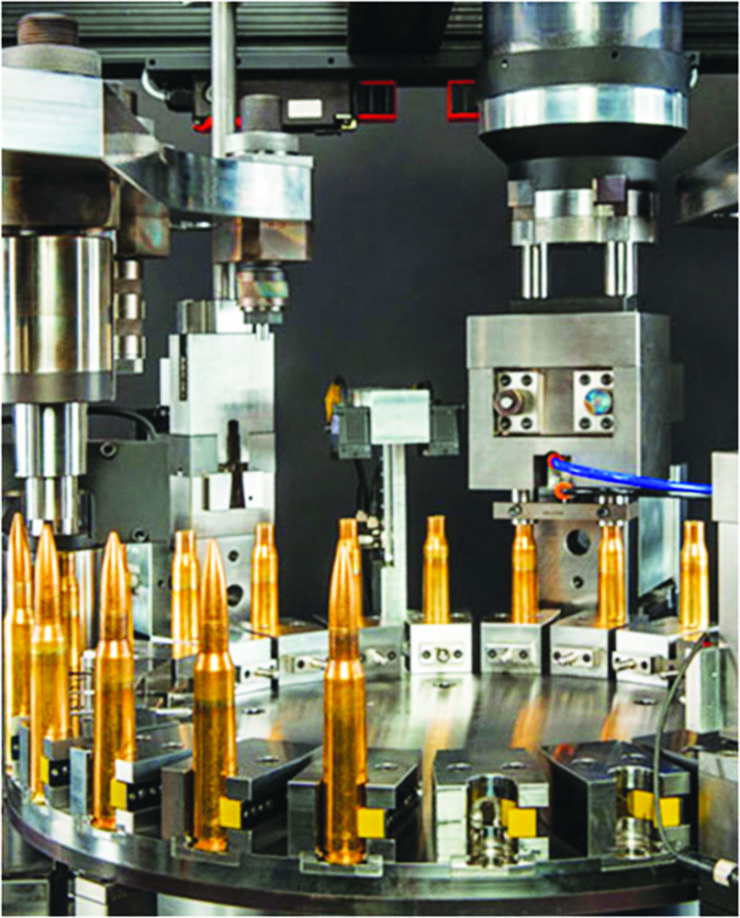
“The Indian government is actively reducing bureaucratic obstacles and implementing time-bound Standard Operating Procedures (SOPs) to streamline processes within the Indian defence industry,” says Sanjay Soni, Director of Hughes Precision Manufacturing Pvt Limited and Si2 Microsystems. Soni acknowledges that while India’s journey towards achieving self-reliance in defence is in its initial stages, a promising beginning has been made. He emphasises that “attaining self-reliance in defence will not only transform the defence industry but also have a positive impact on the broader Indian economy.” Soni draws parallels between military advancements and civilian technology, citing examples such as the “development of Bullet Train brakes inspired by F-86 aircraft technology and the Internet’s origins in the endeavours of Defense Advanced Research Projects Agency (DARPA) of the United States.”
He underlines how the “pursuit of advanced military technologies has historically driven global research and development efforts, often leading to applications in non-defence industries.” Soni, who holds a Commerce degree from Sydenham College, Mumbai, and an MBA from the Indian Institute of Management, Bangalore (IIMB), believes that “India’s path towards self-reliance will yield substantial benefits in diverse areas.”
Alignment with the ‘Make in India’ initiative
When asked about the alignment of his companies, Hughes Precision and Si2 Microsystems, with the ‘Make in India’ initiative, Sanjay Soni elucidates their pioneering roles in their respective sectors. Si2 Microsystems, established in 2008, holds the distinction of being India’s first semiconductor packaging plant. The company serves the defence and space requirements of clients from India, Israel, France, and the US. Soni highlights Si2’s significant contribution to Indian defence projects, aiding Defence Research and Development Organisation (DRDO) labs in reducing dependence on foreign suppliers. Notably, Si2 is the exclusive producer of System in Package (SIP) components in India, a complex technology facilitating systems’ miniaturisation.
Hughes Precision, as Soni further explains, is the premier ammunition manufacturer in the private sector, operating as an Export-Oriented Unit (EOU). The company has established a state-of-the-art ammunition manufacturing facility for small-calibre ammunition, equipped with advanced equipment from the US. Hughes manufactures and exports NATO-grade ammunition to approximately 14 countries worldwide. With an annual production capacity of 220 million rounds, Hughes addresses India’s small-calibre ammunition needs in alignment with the ‘Make in India, Make for the World’ initiative.
Technological expertise and innovation
“Hughes Precision and Si2 Microsystems are determined to foster innovation and advance defence manufacturing capabilities in India,” points out Soni adding that Si2 Microsystems has collaborated with leading Japanese and Israeli firms to introduce cutting-edge technological knowledge to the Indian market. Furthermore, continuous innovation and increased investment in research and development have broadened Si2’s client solutions.
Soni highlights the pressing need to enhance military product functionality while reducing their form factor. “This is the challenge that Si2 is addressing by leveraging its technological expertise and global partnerships,” he explains.
Elevating defence capabilities
 Notably, Hughes Precision is the first Indian company to manufacture .338 sniper ammunition, thereby obviating the necessity for expensive and time-consuming imports of high-quality sniper ammunition by the Indian military, paramilitary, and police. Additionally, Hughes has introduced specialised rounds like “enhanced penetration 5.56x45mm, truly subsonic ammunition for special forces, and ammunition designed for underwater firing by divers.” Soni attributes these innovations to global partnerships and in-house research and development by their engineers.
Notably, Hughes Precision is the first Indian company to manufacture .338 sniper ammunition, thereby obviating the necessity for expensive and time-consuming imports of high-quality sniper ammunition by the Indian military, paramilitary, and police. Additionally, Hughes has introduced specialised rounds like “enhanced penetration 5.56x45mm, truly subsonic ammunition for special forces, and ammunition designed for underwater firing by divers.” Soni attributes these innovations to global partnerships and in-house research and development by their engineers.
Underscoring the key challenges that India has faced and assessing the extent of improvements, as well as whether India is now poised for self-sufficiency in defence manufacturing within the next decade, Soni observes that the challenges, particularly in the ammunition sector, have been numerous.
“There is still a lack of a level playing field with respect to Defence Public Sector Undertakings (DPSUs) vis a vis private Indian defence companies. There are tenders still coming out which are reserved for DPSUs even though there are Indian companies in the private sector that can provide the same or better-quality products at a more competitive price,” he said.
In the realm of semiconductors, a level playing field between Indian companies and foreign suppliers is notably absent. Soni underlines that Indian PSUs or DRDO labs tend to open Letters of Credit (LCs) for foreign suppliers, but refrain from doing so for Indian suppliers. He elucidates that in long-term projects, foreign suppliers quote in US dollars or Euros, while Indian suppliers are compelled to quote in INR, exposing them to substantial exchange fluctuation risks, particularly when dealing with imported components.
“However, we observe that the government is earnestly working to address these challenges and make the path smoother for the Indian defence industry. They are proactively reducing bureaucratic hurdles wherever possible and implementing time-bound SOPs to simplify and expedite the approvals process,” he stated.
India’s Advantage
“India is very well positioned to achieve 80% self-sufficiency in the defence sector in the next 10 years. Although we currently lag behind countries like Turkey and Brazil in defence production and exports, the rapid growth of the Indian defence industry will soon propel us ahead. India possesses a unique advantage with a substantial industrial manufacturing base coupled with skilled engineering manpower that sets us apart. Thus, we are exceptionally well-placed to attain our goal of self-sufficiency in the defence manufacturing arena,” he exudes confidence.
When asked if there are still shortcomings despite the government’s reforms and proactive steps, Soni responds, “The reforms initiated at the Central level require time to permeate down to the ground level. A stark example is the unfortunate incident where our first container of ammunition for export was stuck at Mumbai port for four months due to a lack of understanding at the ground level. Numerous such challenges have emerged since the inception of our production and exports.”
“The defence industry must also be integrated into the ‘Ease of Doing Business’ initiative. Presently, the bureaucracy faces uncertainty in achieving this balance while simultaneously ensuring no security concerns arise. Achieving this equilibrium needs to happen sooner rather than later.”
Having previously struggled to absorb technological know-how, does Soni believe that the Indian defence industry is now better equipped to embrace technology concepts from both ends of the spectrum and maximise technology transfers?
He responds, “Past failures to absorb technological know-how can be attributed to the dominance of DPSUs and Ordnance Factory Board (OFB), in the defence sector. This monopoly hindered the drive for true ‘aatmanirbharta’ in defence production. Foreign suppliers would provide kits that DPSUs and OFB assembled and supplied to the Armed Forces.”
“The indigenous content in major platforms such as the Bofors 155mm Howitzer, T-90 tanks, Carl Gustav M84 weapons systems, etc remains dismally low despite these platforms being in production for over a decade. With the private sector’s involvement, a significant impetus will be generated to assimilate foreign technology swiftly and achieve self-reliance. This shift will lead to decreased import reliance and improved product margins over time. The Indian industry is well-equipped to comprehend and grasp the military technologies necessary for producing world-class military products in India.”

Regarding the additional steps that the government should take to invigorate the defence industry, streamline processes, and focus on outcomes, Soni suggests that the following measures, if implemented, would greatly invigorate the domestic defence industry:
- Introducing a Production Linked Incentive for the defence industry.
- Transferring oversight of arms and ammunition from multiple ministries to the MOD to accelerate growth in this defence production domain.
- Developing a distinct ‘Make in India’ Defence Procurement Procedure (DPP) that streamlines the purchasing process from Indian industry.
- Establishing a level playing field for private industry versus DPSUs. Addressing this is crucial, considering substantial purchases are still made from the erstwhile OFB and DPSUs through single tender procurements. Rectifying this inequality is essential for the private industry, which has invested significant capital in establishing defence manufacturing facilities.
Concluding his insights, Soni, a recipient of an award from former Prime Minister Rajiv Gandhi for his contributions to expanding computer education outreach in India during the early 90s and the author of several books on Computer Science, emphasises, “Special funding provisions or projects for the defence industry should account for the extended development and qualification cycle required for defence production and supply. The current funding options from banks do not align with these criteria. This explains why most MSMEs are cautious about entering defence production programmes.”











